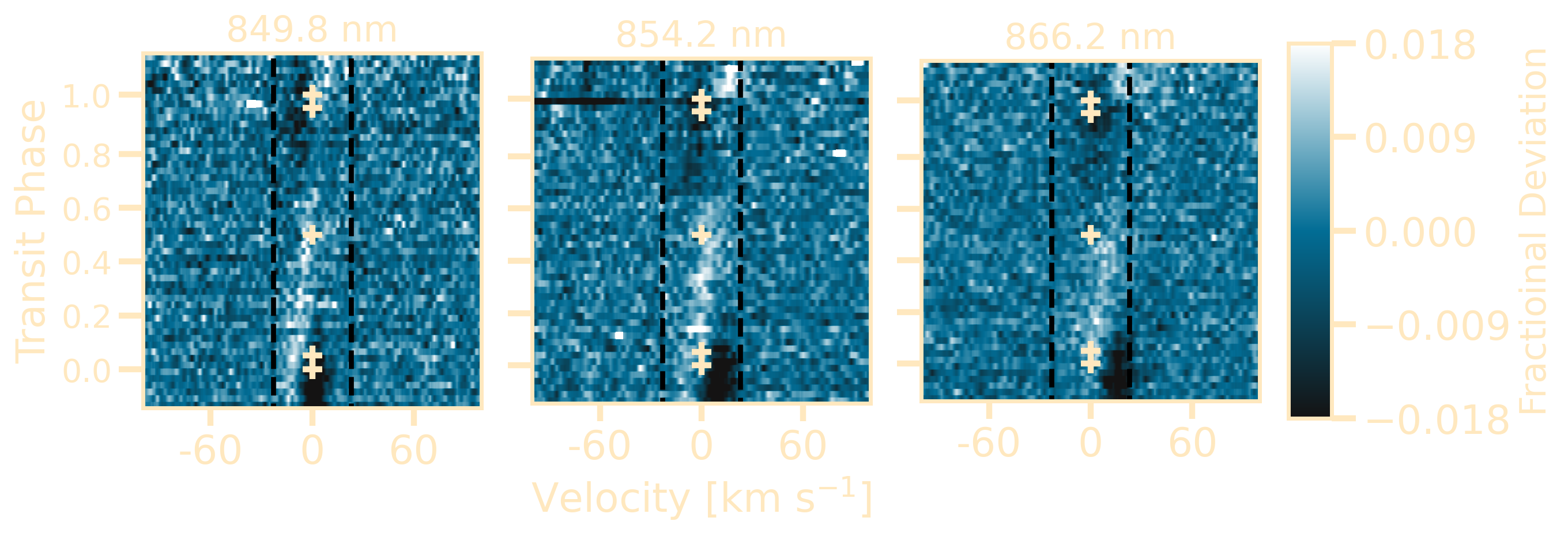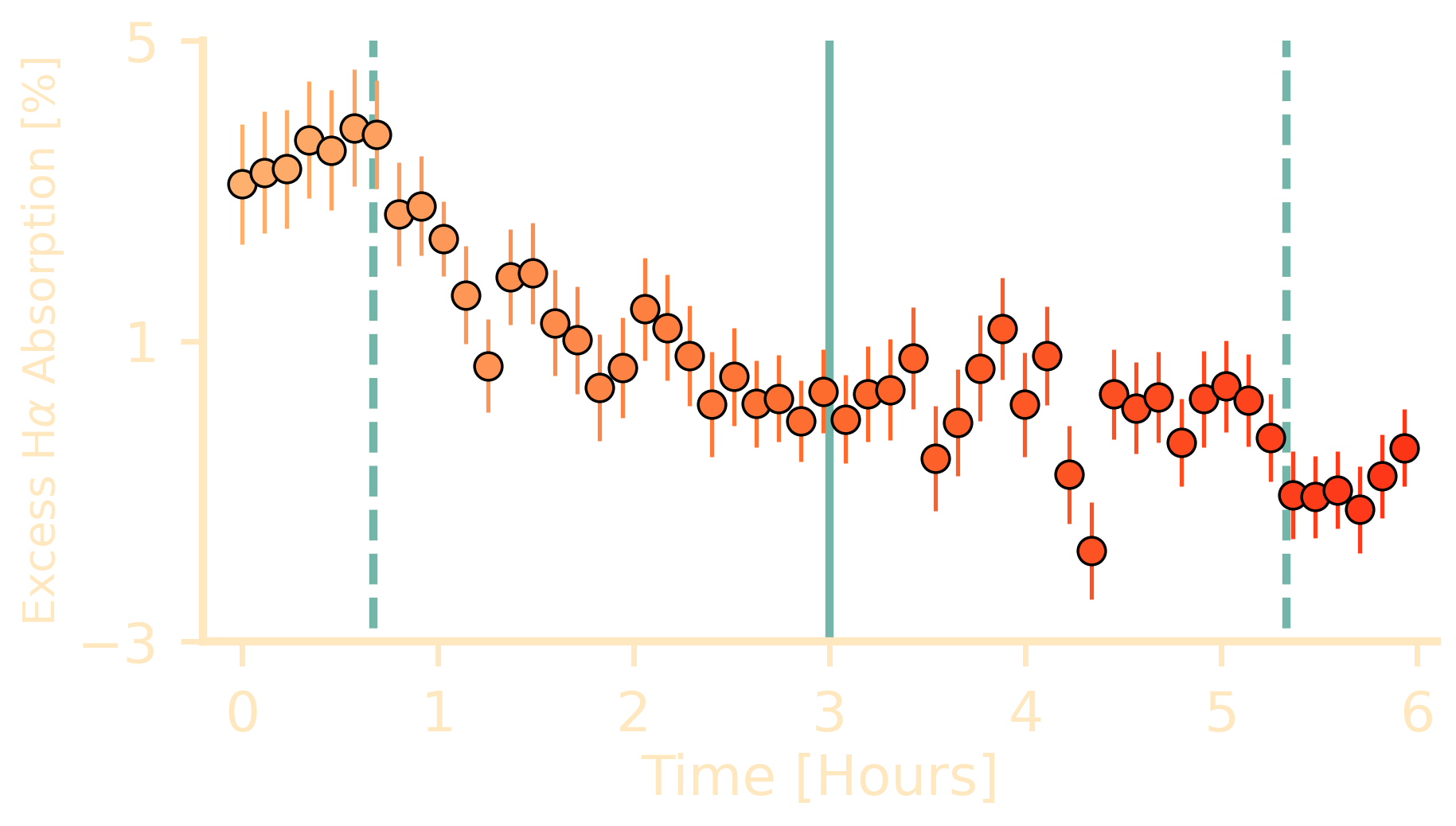We were able to measure the projected obliquity for V1298 Tau c (λ = 5° ± 15°; orange star).
V1298 Tau c adds to a growing list of young planets with low obliquities, including V1298 Tau b
(Johnson et al. in prep), indicating these planets undergo smooth migration shortly after they
formed. Multi-planet systems tend towards being
well-aligned at all ages (Albrecht et al. 2013) and
we have demonstrated that the V1298 Tau system is no exception.
But, we were only able to measure the projected obliquity using the Ca II IRT.
There are still many questions as to why we only see the signal in this triplet.
Are we seeing star-planet interactions? Simultaneous observations of the Ca II IRT
and the Ca II H & K lines would help answer this question.
Other indicators of magnetic behavior, such as stellar flares,
could also be used to address if we are seeing star-planet interactions.
TESS will be observing V1298 Tau from September - November, 2021. If ther is a
phase dependence of planet transits (for any of the planets) and flares, this could
hint at star-planet interactions.
And there are still many questions about why the H-alpha is behaving the way we observed and
if we will be able to detect the extended atmosphere of V1298 Tau c.
Long term H-alpha monitoring of V1298 Tau would prove useful, particularly with simultaneous
photometric monitoring to correlate H-alpha behavior with starspot modulation. This could be
readily done with TESS.
The metastable He I triplet at 1083.3 nm may be an easier line to observe to characterize the atmosphere.






